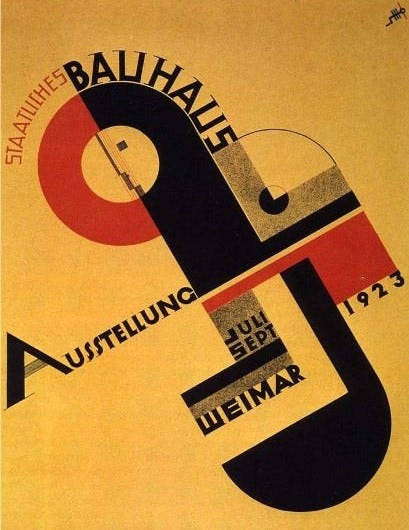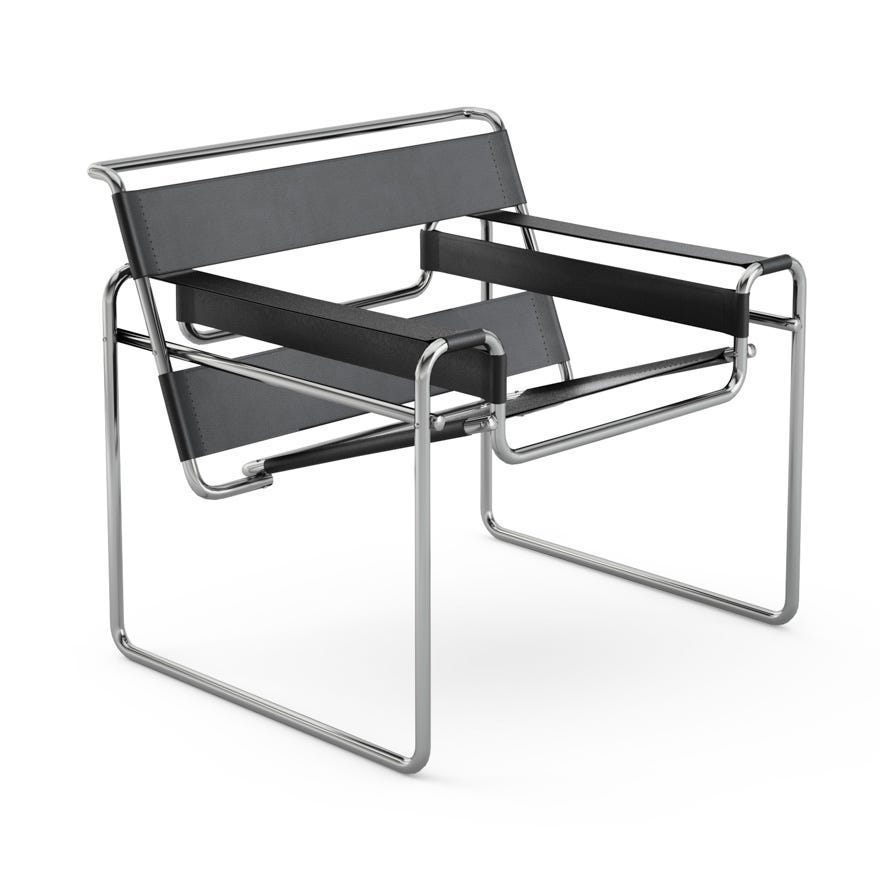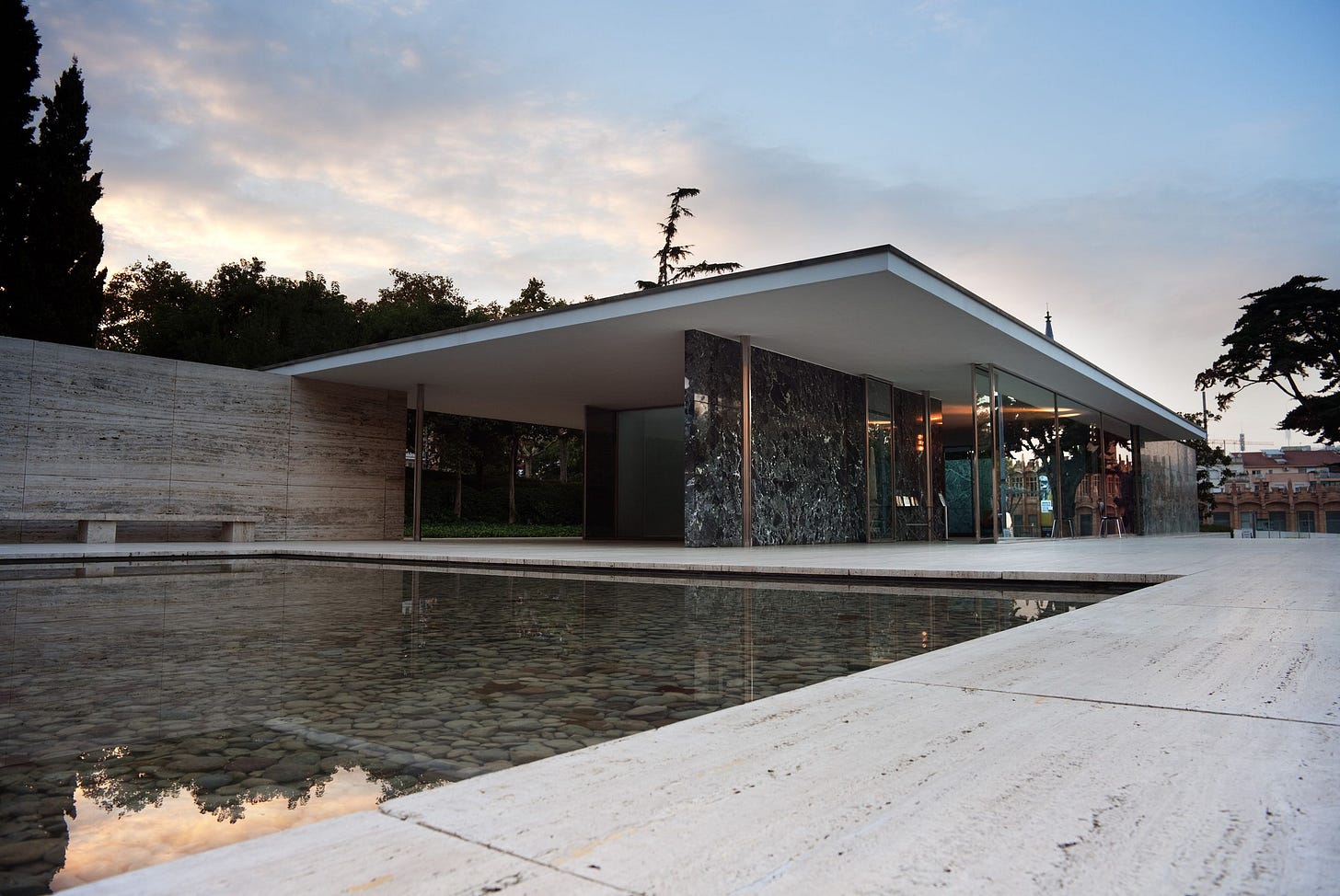Bauhaus - The School That Revolutionized Design
How Walter Gropius's Vision Shaped Modern Design

The Radical Vision of Walter Gropius
A new vision emerged in Germany in the wake of World War I. Disillusioned with the social and artistic divisions of the pre-war era, Architect Walter Gropius dreamt of a radical transformation. This vision would take shape in 1919 with the founding of the Bauhaus — a school unlike any other.
Gropius believed the lines separating art, craft, and technology were artificial. He envisioned a world where these disciplines worked together seamlessly, creating a new kind of functional and beautiful art. This philosophy was laid bare in the Bauhaus Manifesto, which declared: “There is no essential difference between the artist and the craftsman. The artist is an exalted craftsman. The ultimate aim of all creative activity is the building!”
This radical vision challenged the traditional hierarchy that placed fine art on a pedestal while relegating applied arts and crafts to a lesser status. At the Bauhaus, students were not limited to a single discipline. They were trained in various mediums, from painting and sculpture to furniture design and metalworking. This cross-pollination of ideas fostered a spirit of collaboration and innovation.
Technology played a central role in Gropius’s vision. He recognized the potential of new materials and mass production techniques to create well-designed, affordable objects for the masses. The Bauhaus embraced these advancements, integrating them into the curriculum and design principles. This focus on functionality and practicality became a hallmark of the Bauhaus style.
Gropius’s radical vision had a profound impact. The Bauhaus produced some of the most influential designers and architects of the 20th century, including Wassily Kandinsky, Ludwig Mies van der Rohe, and Marcel Breuer. Their work, characterized by clean lines, geometric shapes, and a focus on form following function, revolutionized modern design.
The Bauhaus’s influence extended far beyond aesthetics. It challenged the notion of what design could be, paving the way for a more democratic and functional approach. Today, the Bauhaus’s legacy inspires designers, architects, and artists worldwide.
Function Over Form
For centuries, design prioritized aesthetics over practicality. Ornate decorations and intricate details often took center stage, sometimes at the expense of an object’s core purpose. However, the Bauhaus school challenged this notion. They championed a revolutionary design philosophy: function over form.
This principle wasn’t just a catchy slogan; it permeated every aspect of Bauhaus education and design. Here’s how it played out:
Focus on Usability: The Bauhaus believed that design should serve a purpose. A chair should be comfortable, a lamp effectively illuminates a room, and a building should provide functional living spaces. Every design element had a clear justification based on its intended use.
Minimalism and Clean Lines: Extravagant decorations were deemed unnecessary and distracting. Bauhaus designers favored clean lines, geometric shapes, and a minimalist aesthetic. This enhanced functionality and created a sense of order and beauty.
Embrace of New Materials: The Bauhaus didn’t shy away from new materials like steel, glass, and chrome. These materials offered greater strength and flexibility and allowed mass production, making well-designed objects more accessible to the public.
The Impact of Functionality:
The Bauhaus approach to design had a profound impact:
Aesthetics with a Purpose: Design became more than just visually pleasing; it was about creating beautiful and practical objects.
Mass Production of Quality Goods: By embracing new materials and production techniques, the Bauhaus helped pave the way for the creation of well-designed, affordable furniture, appliances, and everyday objects.
A Legacy of Modernism: The Bauhaus style continues to influence design today. Clean lines, geometric shapes, and a focus on function are hallmarks of modern architecture, furniture, and product design.
“Function over form” wasn’t just about creating valuable objects. It was about creating a new design philosophy emphasizing aesthetics and practicality. The Bauhaus legacy reminds us that good design can be beautiful and serve a purpose, enriching our everyday lives.

Wassily Kandinsky, Ludwig Mies van der Rohe, and Beyond
The Bauhaus wasn’t just a school; it was a breeding ground for revolutionary ideas and some of the most influential designers of the 20th century. These individuals and a talented faculty left an undeniable mark on art, architecture, and design. Let’s delve into the stories of two Bauhaus icons and explore the movement’s far-reaching influence.
Masters of Modernism:
Wassily Kandinsky: A pioneer of abstract art, Kandinsky joined the Bauhaus faculty in 1922. His theories on the relationship between color and form profoundly influenced Bauhaus design principles. His vibrant abstract paintings continue to inspire artists and designers today.
Ludwig Mies van der Rohe: A leading architect of the modernist movement, Mies van der Rohe arrived at the Bauhaus in 1930. His “less is more” philosophy emphasized clean lines, functionality, and new materials like steel and glass. His iconic Barcelona Pavilion remains a testament to Bauhaus principles in architecture.
Beyond the Big Names:
The influence of the Bauhaus extends far beyond these two iconic figures. The school produced a vast array of talented artists, designers, and architects who left their mark on various creative fields:
Women at the Bauhaus: Despite initial challenges, women like Alma Siedhoff-Buscher and Gunta Stölzl became prominent figures at the Bauhaus. Their contributions to textiles, furniture design, and ceramics significantly impacted the movement’s overall aesthetic.
Global Impact: Following the closure of the Bauhaus by the Nazi regime in 1933, many Bauhaus members emigrated, carrying the school’s philosophy to various corners of the world. This diaspora helped spread Bauhaus ideas and influenced design movements across the globe.
A Legacy that Endures:
The Bauhaus may have closed its doors in 1933, but its legacy continues to resonate. The school’s focus on functionality, clean lines, and the integration of art, craft, and technology has profoundly shaped modern design. From architecture and furniture to graphic design and product development, Bauhaus principles are evident everywhere.
Today, Bauhaus design remains a cornerstone of modern aesthetics, a testament to Walter Gropius’s enduring vision and the many talented individuals who made the Bauhaus a revolution in art, design, and architecture.
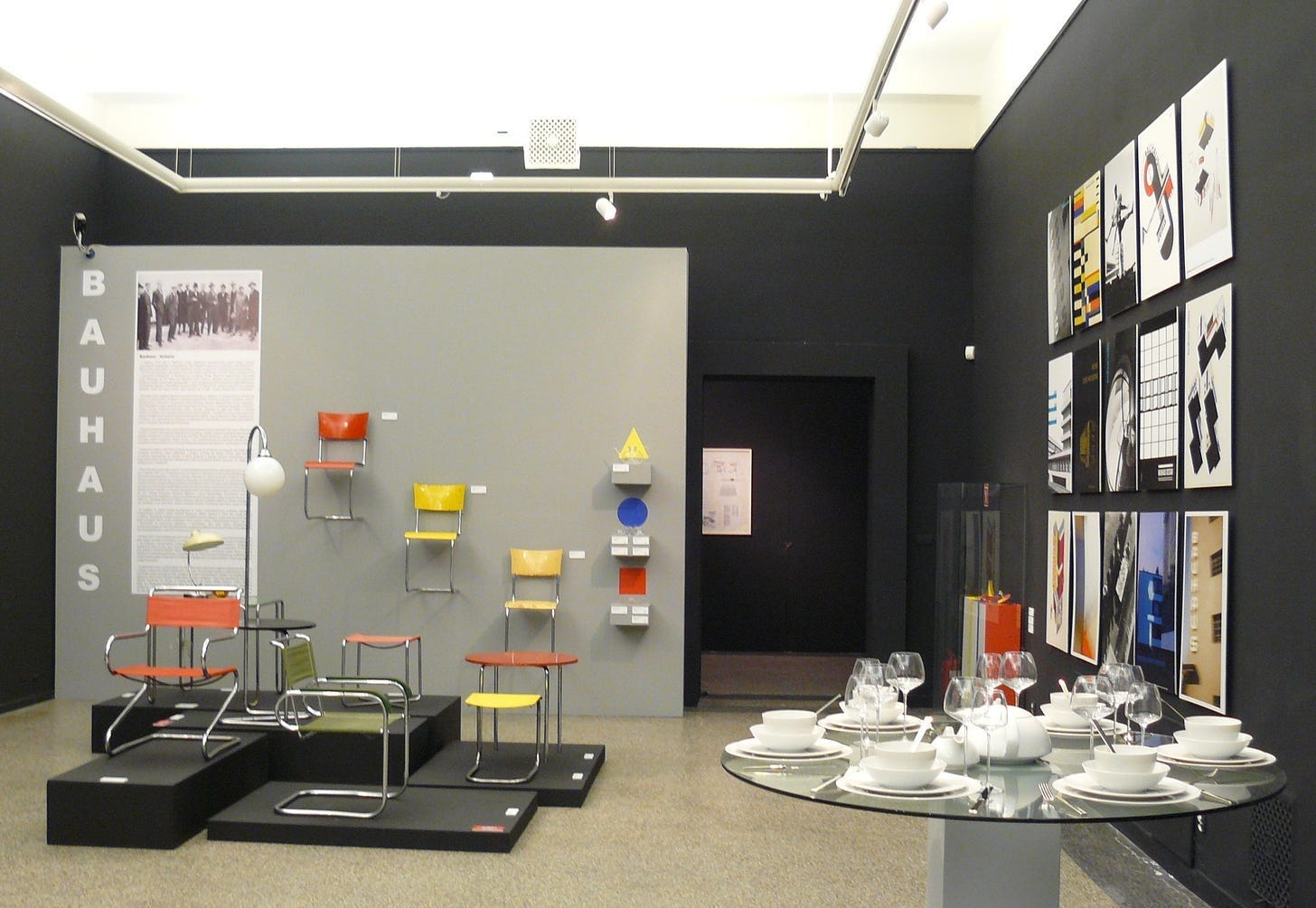
The Bauhaus Impact on Architecture, Furniture, and Everyday Objects
The Bauhaus wasn’t just about creating beautiful objects. It was about creating a new way of thinking about design — a philosophy that transcended borders and continues to shape our world today. The Bauhaus approach, emphasizing functionality, clean lines, and the marriage of art and industry, profoundly impacted three critical areas of our lives: architecture, furniture, and everyday objects.
Bauhaus Architecture
The Bauhaus challenged traditional architectural styles that favored ornamentation and historical references. Bauhaus architects like Ludwig Mies van der Rohe championed a new approach:
Form Follows Function: Buildings were designed to serve a specific purpose, with every element contributing to functionality and livability.
Embrace of New Materials: Steel, glass, and concrete became the building blocks of a new aesthetic, creating open floor plans, expansive windows, and a sense of lightness.
International Style: The Bauhaus style, often called the International Style, spread rapidly across the globe. Its influence is seen in iconic buildings like New York’s Seagram Building and Chicago’s IIT Campus.
The Bauhaus Legacy in Design
Furniture design underwent a significant transformation under the influence of the Bauhaus:
Minimalism and Comfort: Ornate furniture gave way to simple, functional designs prioritizing comfort and usability. Think of the iconic Wassily Chair by Marcel Breuer, a testament to both form and function.
New Materials, New Possibilities: The Bauhaus embraced new materials like chrome and tubular steel, allowing for innovative designs and mass production, making well-designed furniture more accessible.
A Timeless Aesthetic: Bauhaus furniture continues to be popular today. The clean lines, geometric shapes, and focus on functionality remain hallmarks of modern furniture design.

Clock designed by Erich Dieckmann (1931) Bauhaus. (2024, March 11). In Wikipedia. https://en.wikipedia.org/wiki/Bauhaus
A Bauhaus Touch
The impact of the Bauhaus wasn’t limited to grand buildings and statement furniture. It permeated the design of everyday objects:
Simple and Functional: From lamps and tableware to kitchen appliances, the Bauhaus influence is evident in the focus on clean lines, functionality, and ease of use.
Mass Production for the Masses: The Bauhaus helped create high-quality, affordable everyday objects by embracing new materials and production techniques.
A Universal Language of Design: The Bauhaus aesthetic transcended cultural boundaries. Its focus on simple forms and functionality created a universal language of design that continues to influence product design today.
A Legacy that Lives On
The Bauhaus may have closed its doors in 1933, but its global influence is undeniable. From the buildings we live and work in, the furniture we use, and the objects we interact with daily, the Bauhaus legacy continues to shape our modern world. It serves as a reminder that good design is not just about aesthetics; it’s about creating beautiful and functional objects that enrich our everyday lives.

A Modernist Movement That Continues to Inspire
The Bauhaus was more than just an educational institution. It was a crucible of creativity, a breeding ground for groundbreaking ideas, and a catalyst for a design philosophy that continues to resonate today. Though the school closed its doors in 1933, the Bauhaus legacy remains vibrant in art, architecture, and design.
The Enduring Principles of Bauhaus:
The core tenets of Bauhaus design continue to inspire generations of creators:
Form Follows Function: This guiding principle emphasizes that an object's design should be driven by its intended purpose. Functionality shouldn’t come at the expense of aesthetics; beauty should emerge from a well-considered design that effectively serves its purpose.
Marriage of Art and Industry: The Bauhaus championed the idea that art and industry weren’t separate entities. They believed that mass production could create high-quality, well-designed objects for the masses, not just the elite.
Simplicity and Clean Lines: Ornate decorations and excessive embellishments were eschewed in favor of clean lines, geometric shapes, and a minimalist aesthetic. This focus on simplicity created a sense of order, balance, and timeless elegance.
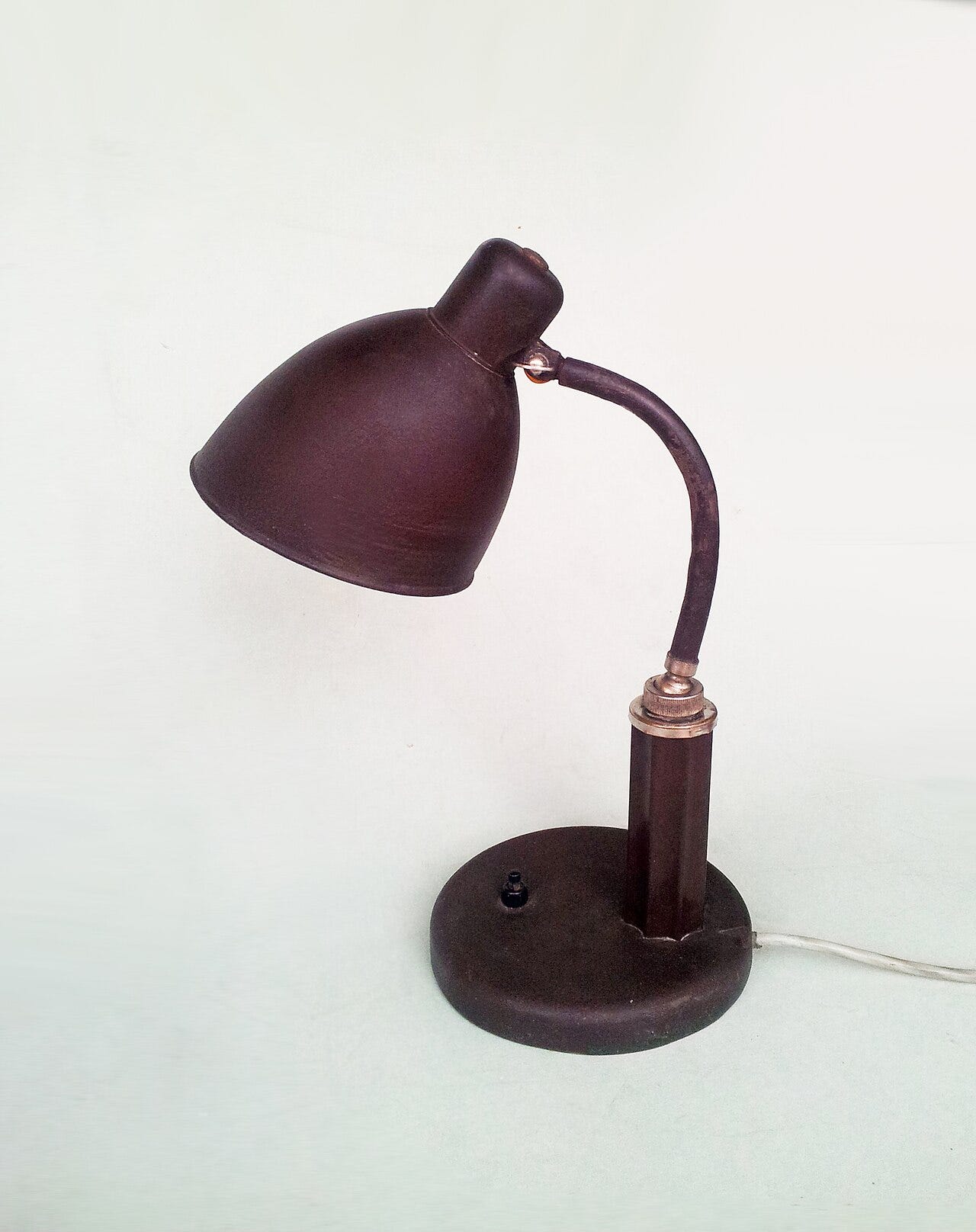
A Legacy that Touches Every Aspect of Our Lives:
The influence of Bauhaus isn’t confined to museums and art galleries. It’s woven into the very fabric of our modern world:
Architecture: The clean lines, open floor plans, and emphasis on functionality championed by Bauhaus architects continue to shape modern architecture. From iconic skyscrapers to suburban homes, the influence of the Bauhaus is undeniable.
Furniture Design: The iconic Wassily Chair, the Barcelona Pavilion furniture collection, and countless other modern furniture pieces owe a debt to the Bauhaus philosophy. The focus on comfort, functionality, and innovative materials inspires furniture designers today.
Everyday Objects: From sleek kitchen appliances to minimalist lamps and tableware, the Bauhaus influence is evident in the design of everyday objects. The focus on clean lines, user-friendliness, and mass production has made well-designed objects accessible to a broader audience.
A Springboard for Innovation:
The Bauhaus legacy isn’t merely about copying past designs. It’s about embracing the core principles and using them as a springboard for innovation. Modern designers and architects continue to find inspiration in the Bauhaus philosophy, adapting it to new materials, technologies, and contemporary needs.
A Timeless Appeal:
In a world often saturated with the trendy and the fleeting, the enduring appeal of Bauhaus lies in its focus on timeless principles. Clean lines, functionality, and a marriage of aesthetics and practicality never go out of style. The Bauhaus legacy reminds us that good design transcends trends and fads, creating beautiful and purposeful objects that enrich our lives for future generations.
Follow me on Instagram, Facebook or Twitter if you like to keep posted about tutorials, tips and experiences from my side.
You can support me from Patreon, Github Sponsors, Ko-fi or Buy me a coffee




